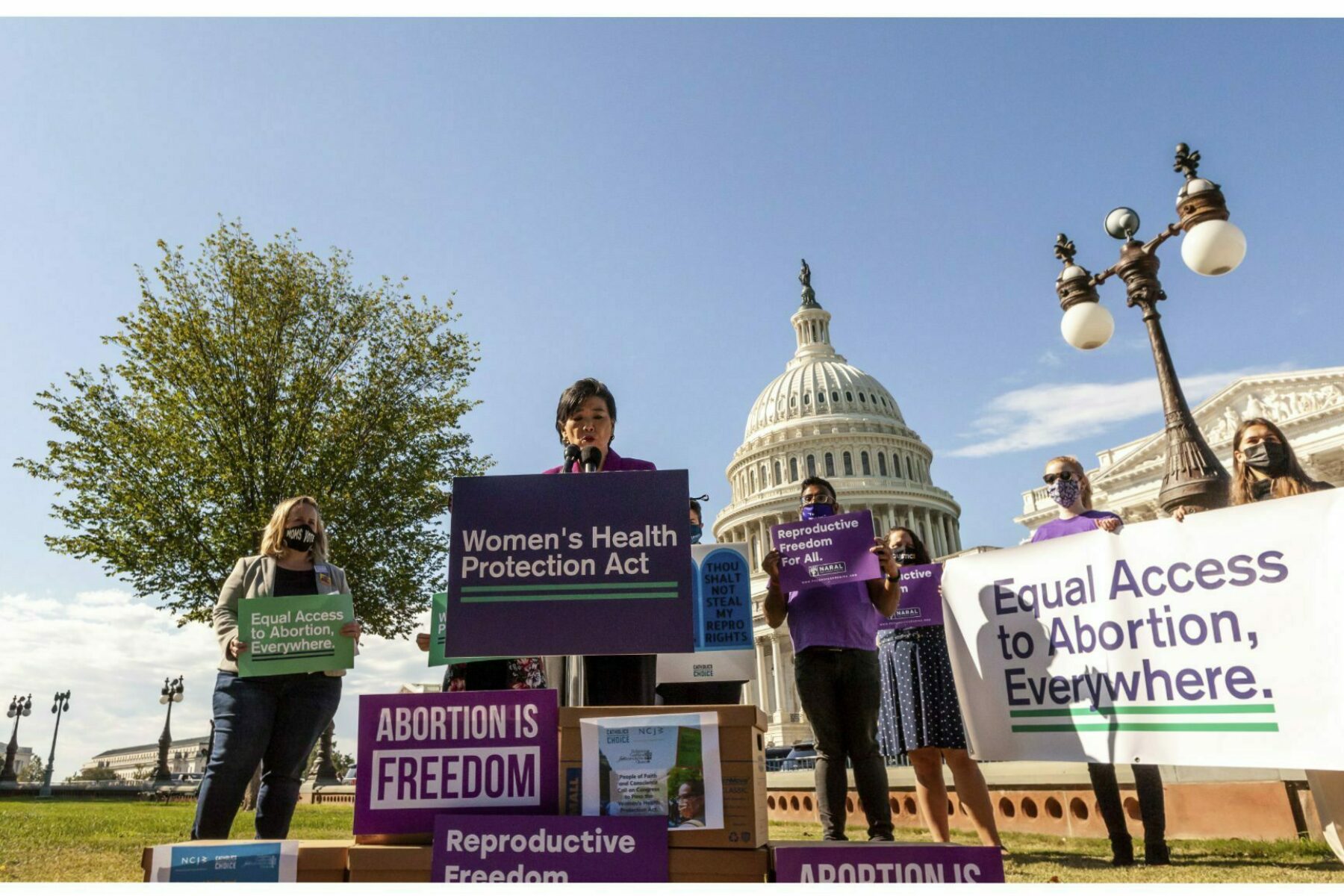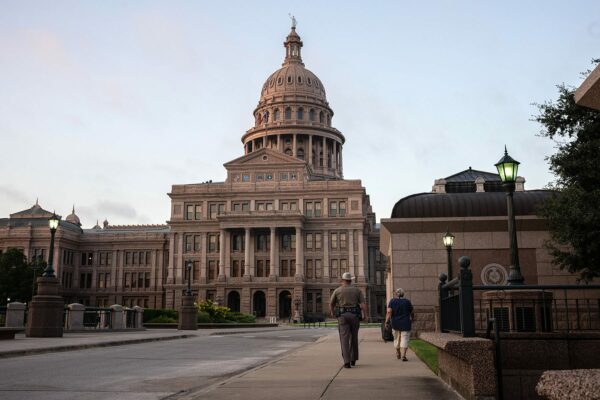John Stoehr
January 14, 2022

Chief Justice John Roberts (screengrab)
Normal people don’t pay much attention to the United States Supreme Court. I don’t know why. Here’s nine people who tell us what the law is. They tell us what the law is even if their reasoning for it is trash.
Such is the case with the court’s latest ruling. The six Republican justices could have said to themselves, “Gee, the pandemic is bad. It’s killing a lot of people. Maybe we shouldn’t second guess the people who know what they’re talking about when it comes to public health.”
Nah.
The court instead decided to second guess the Occupational Safety and Health Administration. The White House had tried to implement the president’s vaccine-or-test mandate via OSHA’s statutory authority to regulate workplace safety. The mandate would have affected employers with over 100 workers, or about 100 million people.
The Republicans justices make-believed they were public health experts. The covid, though it continues to rage through the workplace, isn’t an occupational hazard, they said. Why? It exists, like other hazards in life, outside the workplace. Therefore, OSHA doesn’t have the statutory authority the Biden administration says it has.
This is stupid, according to Josh Chafetz, professor of law at Georgetown and author of Congress’s Constitution: Legislative Authority and the Separation of Powers. (“Stupid” wasn’t his word, though.) Air exists outside the workplace. So does water. Yet OSHA regulates them. This is what happens when justices make-believe.
It gets worse.
The justices said they were restoring power to Congress, but Josh said nuh-uh. That’s bad faith. What they are really trying to do is dismantle the administrative state. To do that, Republican justices invented out of thin air something called the “major questions doctrine.”
It’s complicated. Josh explained in our chat. The long and short of it, though, is that the court’s Republicans figured out a way to tear down what they don’t like while never appearing to have torn down anything.
The result is a court that’s okie-dokie with mass death while being hostile toward a government trying to prevent more mass death.
The ruling was about the authority of OSHA. Why did the conservatives say it does not have authority over workplace safety?
Their opinion basically hinged on two reasons – one absurd and one pernicious. The absurd one is best summed up in this sentence from the opinion: "Although COVID–19 is a risk that occurs in many workplaces, it is not an occupational hazard in most. COVID–19 can and does spread at home, in schools, during sporting events, and everywhere else that people gather."
In other words, the majority said that OSHA is designed to regulate things that are unique to workplaces, and since Covid exists everywhere in society, it isn't unique to workplaces.
This is absurd for a couple of reasons.
First, it's not anywhere in the statutory language. The statute gives OSHA the authority to set "occupational safety and health standards." It doesn't say that the dangers against which OSHA can protect have to exist only in occupational environments – it simply says that OSHA can regulate them when they exist in such environments.
And that brings us to the second reason, that it's absurd: Lots of stuff OSHA regulates exists outside of workplaces. OSHA can regulate for workplace fire safety, even though fires burn down houses and churches and other places, too. OSHA can regulate for workplace air quality, even though air pollution exists on the streets, too.
The second, pernicious basis of the opinion is what is called the "major questions doctrine" in administrative law.
Under most circumstances, when an agency regulates pursuant to statutory authorization, the courts will defer to that agency's understanding of the law, so long as that understanding is reasonable. (This is called "Chevron deference," named for a 1984 case.)
The "major questions doctrine" is a carveout to this regime that basically says, "We won't defer to agencies when the agency has taken it upon itself to decide a 'major question.'"
This is pernicious because what counts as a "major question" is entirely in the eye of the observer, and is a post-hoc determination made by the court.
Which means that, although the Court claims the “major questions doctrine" is Congress-empowering, it just empowers the justices who decide in the moment whether they think a particular question is "major" or not. So, here, they decide that the vaccinate-or-test mandate is "major" and therefore that OSHA gets no deference.
So they say they are respecting Congress but not really?
Exactly. They say this is all about returning power to Congress. (In effect, they're saying, “Surely if Congress meant to allow the agency to address such a major question, it would have said so explicitly in statutory text.”)
But Congress had no way of knowing when it wrote the statute (a) precisely what issues would arise or (b) whether the justices would decide those issues were "major" (and therefore outside the normal deference regime) or not.
So this isn't actually about respecting Congress's wishes – after all, Congress chose to write broad language against the backdrop of a generally applicable deference regime.
Instead, it's about the Republican justices inventing a new doctrine that allows them to impose deregulatory outcomes whenever they want to under the flag of empowering Congress.
Clarence Thomas seemed to underscore this point. He said Congress did not “expressly authorize" vaccine requirements. The thinking here seems to be that if Congress does not write laws in granular detail, no agency has any authority. Am I onto something?
That's Thomas writing in dissent in the other case, the one about healthcare workers specifically. He says that the Department of Health and Human Services and the Centers for Medicare & Medicaid Services don’t specifically have that authority. That ties into a deep anti-administrativism that runs throughout Thomas's jurisprudence, and increasingly in that of many of his colleagues as well.
This would also require Congress to be as nimble, informed and experienced about, say, public health policy as the public servants whose job is public health policy. That seems absurd.
Indeed! Again, what looks like deference to Congress is in fact cover for a deregulatory regime, because these judges know full well that this is not how legislatures are set up to work in the modern world.
Deregulation with the outcome being increased profits is one thing. Deregulation with the outcome being mass death is another. Before this pandemic is over, 1 million Americans will be dead.
Yep. And the Republican justices just made the policy choice to allow many more to die.
This goes back to the subjectivity of what counts as a "major question."
To my mind, getting vaccinated is a minor inconvenience at most. Getting tested is also a minor inconvenience. Getting to choose whether to be vaccinated or tested weekly is even more minor.
But the majority describes them as "major," so suddenly they're overturning OSHA's decision and creating a situation that will kill more people.
Can we say in fairness that some of the justices are giving credence to anti-vax views?
Yes, I think that's fair. They're all vaccinated and boosted, of course, as are so many elites of all types who are playing footsie with anti-vaxxers.
But they're definitely giving support to the anti-vax movement with both the decision and also with some of the language.
I'll also note that they describe it as a vaccine mandate, rather than a vaccine-or-test mandate, which is telling.
So this doesn't end with covid vaccines.
Definitely not.
The broadening of the major questions doctrine means a lot of environmental regulations are probably in trouble, as are just about any other regulations that the Republicans on the Court don't like.
That's what's so pernicious -- they can describe just about anything as "major" and then use that as a reason to deny deference, which in practice means gutting the regulation.
What is the ideal deregulatory scheme for these people? A federal government with no authority to provide for the general welfare?
Well, Thomas, at one extreme, has repeatedly expressed nostalgia for the "Lochner era," the period between the mid-1890s and 1937 when the Court frequently struck down both state and federal health, safety, and welfare laws.
I think some of his Republican colleagues don't want to go that far, but they do want to radically pare back the administrative state, which would have a significant deregulatory effect.
But what’s the threshold between too little and too much?
I'm not sure they have that fine-grained a view, and of course their ability to calibrate is limited by some of the constraints of the judicial role.
But the majority today definitely thinks that there is too much federal regulation generally, and it is using a lot of different sorts of mechanisms to pare it back across the board.
This is bad for democracy.
I agree. And, again, what makes it even more frustrating is that they claim to be doing it in the service of empowering representative institutions.
Josh, our hour is up. Many thanks for your time, consideration and caring.
My pleasure! It was fun!











